How might a Home-buyer-to-Agent matching application improve its conversion rate? Case Study Real Estate, AI Automation, User Testing
Introduction
Real Estate agents are always up against the clock when it comes to obtaining leads and converting those leads into home sales. Leads were generated through various platforms from Social Media to Email Marketing to Cold calling. Sometimes those leads can generate a motivated buyer, but more often than not those sales funnels generate leads that need to be nurtured. Nurturing takes a little understanding of your clients as well as time to gain trust and interest of the customer. With a Nurture Lead, An Agent will call the potential buyer and try to match them with a Real Estate Agent. Our Client was looking for a way to efficiently nurture leads, so they can transfer them over to a real estate agent to purchase a home.



Background
This client is a leader in the Real Estate industry. They operate by matching potential home buyers with real estate agents. They wanted to implement Artificial Intelligence in the customer acquisition process, but were unsure of where and how to implement such a feature.



Research
Establish Client's Business Goals
I first wanted to establish the client's business goals. I was able to get several key stakeholders from different parts of the company to sit down in a room and conduct a Discovery Session. We conducted an Affinity Mapping exercise, and used a voting system to key in on agreed business goals. To keep the exercise hyper-focused, we also established short-term goals versus long-term goals.
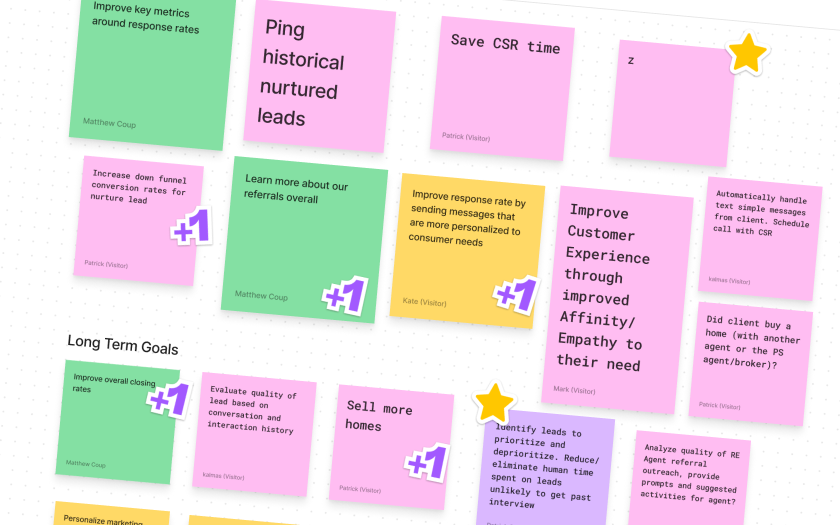
What do we know about the End User (Nurture Lead)?
Through extensive research and analysis of their data, we could establish characteristics about the User. We wanted to understand the User's goals at the initial interest of home buying.
What is the Customer Journey?
After we understand the User, we map out their journey from initial interest in home-buying to purchasing a home. We then list out opportunities in each step where we may be able to improve the Customer Experience.
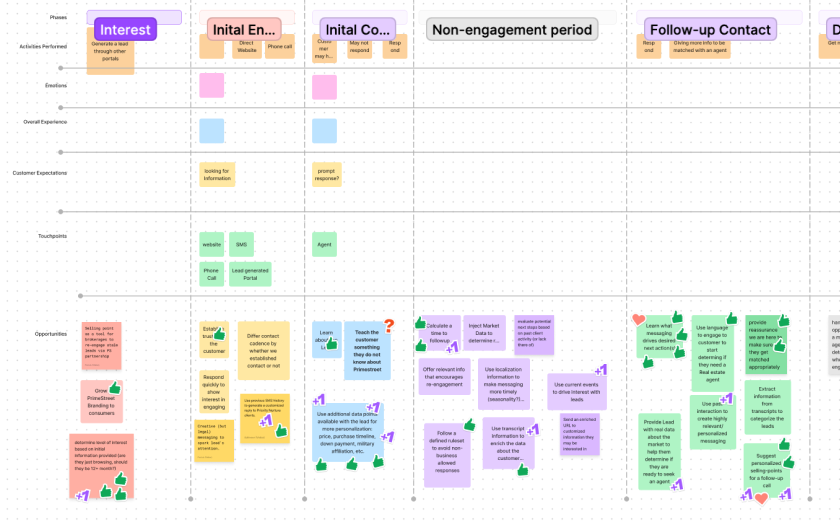
What areas should be focused on now for iterative improvement?
We took those opportunities and mapped them onto a 9-box diagram. This was done to establish business priorities based on the customer's value versus time and effort.
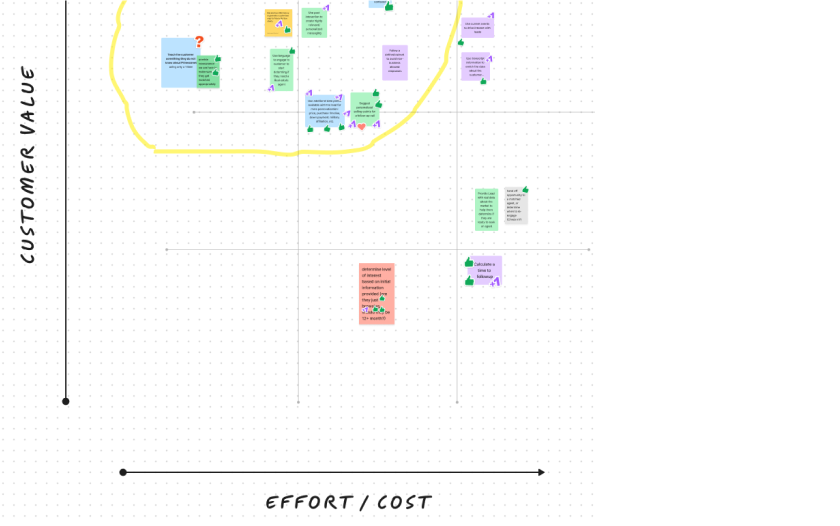
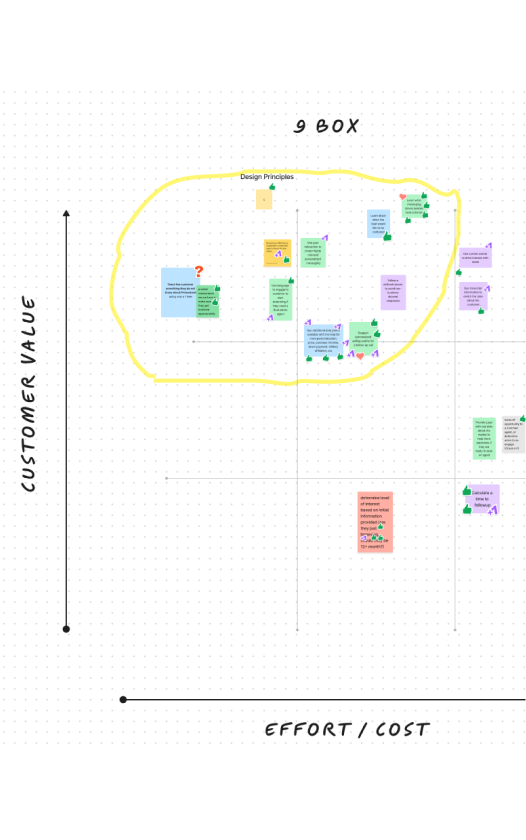

Analysis
Business Goals
Several business goals surfaced during the session. We was able to prime them into these three Goals.
- Enhance bottom-line conversion rates by nurturing qualified leads.
- Gain a broader understanding of our potential customers.
- Avoid violating state or Federal Law
User Demographic
Using existing customer feedback, we started to understand why Customers were hesitant to seek a Real Estate.
- Still saving for a down-payment
- Interest rates are too high
- Waiting on kids to move out of school
Customer Journey (Nurture Lead)
Using existing customer feedback, the Customer Journey became clear.
- Initial Interest
- Initial Engagement
- Non-Engagement Period
- Follow-Up Contact
- Determine to be matched
Business Opportunities to Focus On
We was able to clearing see opportunities once the customer journey was mapped out.
- Establish trust with the customer
- Use additional data points available with the lead for more personalization: price, purchase timeline, down payment, military affiliation, etc.
- Suggest personalized selling points for a follow-up call
- Learn what messaging drives wanted next action(s)
Design
With a clear understanding of the pain points and expectations of the users, we started the design process. We wanted to design an experience that took into account the customer's needs, and interact with that customer using personalized messaging.
Initial-engagement period
To their leads, nothing changed. An agent will call them to establish a match fit, and they will interact with the agent by answering questions. So we may use the data for later use; we would record the conversation.
Non-engagement period
We used a Natural Language Processor to analyze the phone call. We then would use an AI application to generate three to four SMS messages to send to the Lead during the Follow-up Period. The agent would ultimately choose the SMS message to send.
Follow-up Period
Customers would receive personalized messaging based on their initial contact, and would be able to interact with the Agent for follow-up questions. Agent will still have the aid of the AI to respond to the Lead.
Determine Stage
At any time the lead will have the option to decline, but if the engagement has been positive, the agent can open a Real estate agent request. The Real Estate Agent's report on conversion will measure success.
Prototyping and Testing
After finalizing the design, we created a prototype of the app and conducted a 10% market launch. We wanted to see if our AI-aided engagement was producing higher conversion rates than the already established method of converting nurture leads. We established a working theory that with the help of AI-generated SMS messages, the Agent would be able to interact with more leads and establish readiness more effectively. The agent could then determine what leads to pass off to a Real Estate Agent. The Real Estate Agent's report on conversion will measure the success of the experiment.
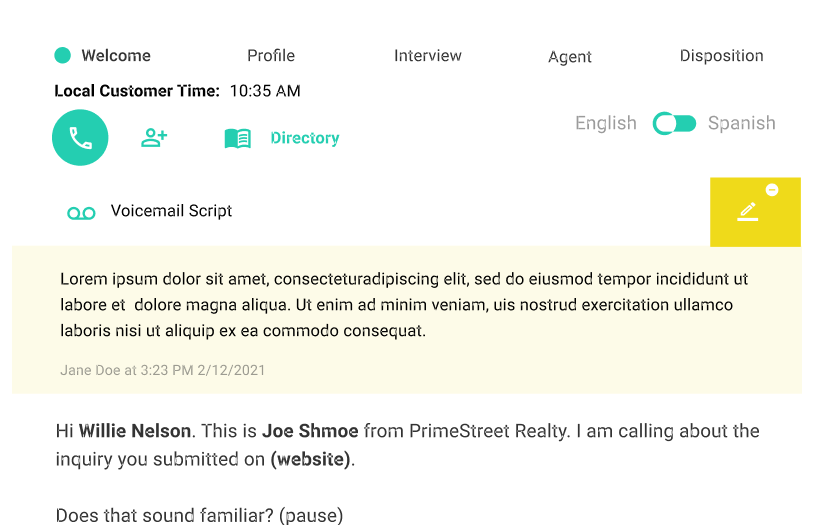
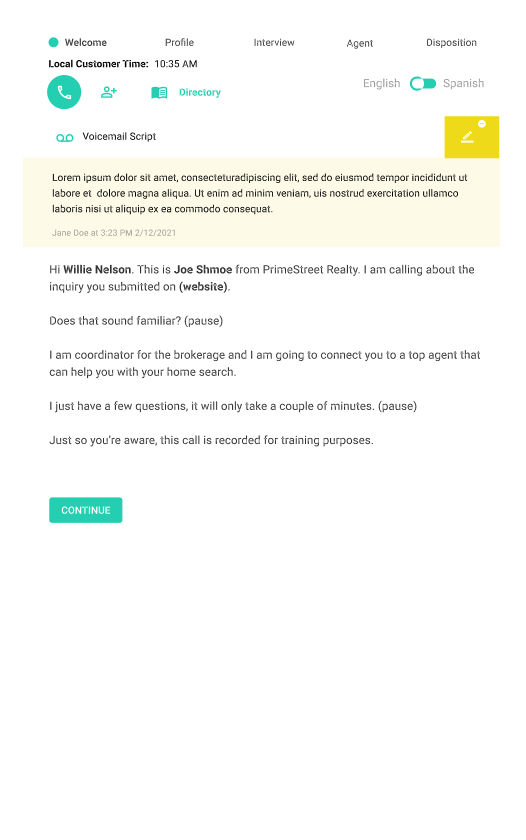

Launch and Results
The redesigned Experience was launched, and results showed an increase in conversions. Success! We were able to gain data points that were unexpected. We found out different markets behave differently. Time of year was also a factor. Colder climates had different buying habits than warmer clients. We were able to inject real-time information into the SMS message such as lowering interest rates.
Conclusion
Redesigning the Lead Experience for enhanced user experience proved to be a successful endeavor. Through research, analysis, and design, we were able to address the pain points of users and create a more intuitive and personalized experience. The project taught me the importance of understanding the user's perspective and continuously seeking feedback to improve the user experience.
